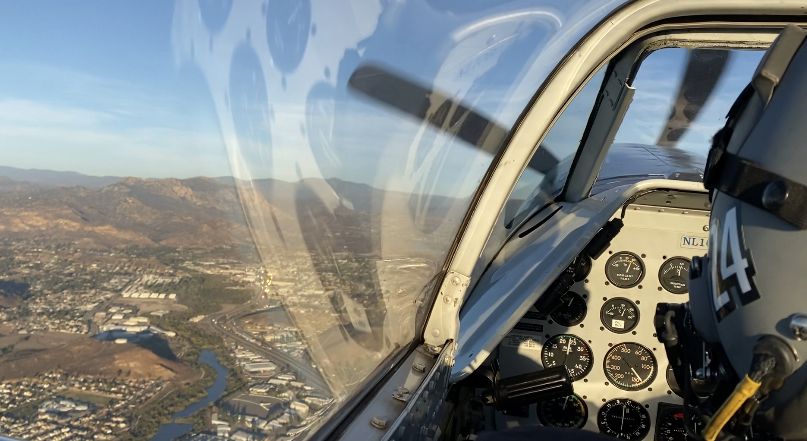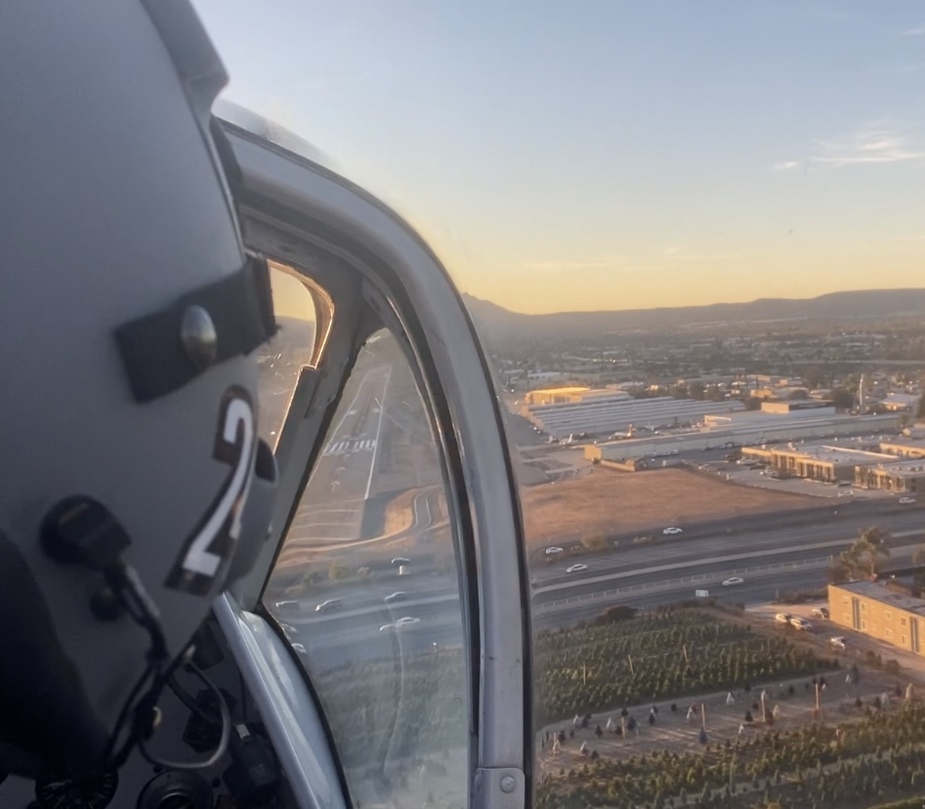@Dan the thread title is explained in the first post. I’m not sure I could change in now although if @Peter wants to change it for clarity, no problem.
We were joking around when the plane first arrived, I claimed not to know what is was, and asked if was maybe a Rand KR-2 (the lowest possible form of airplane that might be hanging around the airport) In response, because it’s built more or less like a oversized RV-8 (or vice versa) it became the RV-18 
A while back there was an Extra 300 that wouldn’t go away and was taking up valuable hangar space. That one was named the Extra Extra.
thanks @Silvaire, I read post #1 alright, but still fail to see the relationship between a WW2 P51 Mustang, and a Vans Aircraft RV-8. The only common traits being the tandem seating, the material used (as in zillions of Cs and Ps), and the dragging tail…
Yes, quite a few of those -8s are painted “in honor”, but still bear little resemblance to the original thoroughbred…
I’m actually struck by the opposite. It’s very much what an RV would be if it were scaled up to the same size and performance: similarly simple and logical, and built with the same airframe materials and structural technology.
To illustrate my point, if you were to look at a Spitfire (check the wing spar) or Hurricane, or a T-6 trainer also built by NA for that matter, you would not likely get that impression. Those are built differently with a higher parts count.
well, not gonna argue for the sake of it, still…
Let’s only recall recent RV history: The -1 became a -3, which evolved into the -4. The problem is that mainly US customers were becoming more muscular by the year, and had more and more problems fitting in a -4, hence Vans designed the -8. The idea was not to copycat the NA P-51…
Long live the P-51 Mustang 
Long live the Van’s RV-8 
Silvaire wrote:
Those are built differently with a higher parts count.
The Bf-109 has allegedly only 1/3 of the part count compared with a Spitfire  Regarding maintaining one today, I think the Spitfire is relatively easy because it was designed essentially as a homebuilt, few special tools required, and few parts that cannot easily be made.
Regarding maintaining one today, I think the Spitfire is relatively easy because it was designed essentially as a homebuilt, few special tools required, and few parts that cannot easily be made.
Yes, the Spitfire was designed like a homebuilt in the sense that it was not heavily tooled up, all hand made. Take a look at the multiple square tubes, inserted snugly concentric with each other, that form the Spitfire wing spar caps. The idea was the cap is effectively tapered by ending the individual tubes at different stations along the wing. Take two of those concentric square tube assemblies, attach them to a shear web, and you have a wing spar, one made of a great many pieces.
A relative worked at Supermarine from 1945 to 1957 or so, and I heard a lot of stories. The aluminum fairings were made by hand, even the saddle shaped fairing at the root of the vertical tail.
Something like the Mustang, apparently the Bf-109 (I’m not greatly familiar with the design although I’m following Kermit Week’s Taifun project closely on UT) and I think even the RVs is built in a more ‘tooled up’ way.
I finally got my back seat stick time in the P-51. As one might expect it is an unbelievably loud experience, like flying with the hammers of hell and I barely fitted in the back seat, in the latter regard very much like an RV-8  I was able to find it flies very nicely in the basic maneuvers I performed, steep turns, normal climb and descent. Very direct, solid, no nonsense was my impression. This was just after takeoff, climbing at 140 mph.
I was able to find it flies very nicely in the basic maneuvers I performed, steep turns, normal climb and descent. Very direct, solid, no nonsense was my impression. This was just after takeoff, climbing at 140 mph.

My friend the real P-51 pilot demonstrated some aerobatics and a couple of stalls. He says it’s great for aerobatics except you need three times the space that a light aircraft needs. We then landed with an I’d guess 3G overhead break and tight circle to the threshold.

A great experience despite my ears still ringing and chest still reverberating like I’d been front row of a heavy metal concert for 30 days in row. I don’t know how wartime pilots could fly these every day.
We burned 40 gallons of 100LL on our short flight, fuel flow on takeoff is something to see.
I just turned zinc chromate green with envy 
Wow. That’s quite a ride.
It was for sure an interesting ride. The physical environment for the pilot is much harsher than I had realized. Of course I was in the jump seat, with the usual mess of parachute and harness straps holding me in a position in which my head hit the canopy unless tipped forward slightly. This didn’t help when doing aerobatics (my neck still hurts). Otherwise the noise for anybody on board is just outrageous and there’s a fair amount of vibration too. I’ve only flown one other (experimental) plane where the intercom and headsets are completely overwhelmed on the upwind, making onboard or ATC communication impossible for a while. In level flight the noise diminishes slightly… but if you imagine sitting in a dyno room right next to an engine on full power test while simultaneously trying to fly a plane, that’s a pretty good analogy. There is also a lot of heat coming off the engine and cooling system and the cockpit is hot. I have renewed respect for the people who had to endure that environment for four hours straight 78 years ago, plus thinking clearly and flying in combat at the same time.
On the plus side, I found the P-51 to be a nice handing device. It was easy to roll into a 60 degree + banked turn and hold altitude and turn rate precisely. Its aerodynamically clean, cutting through the air as if on rails and given the high wing loading its very stable. The stall seemed reasonably controllable as I watched it being done, roll off was present but was fixed by getting the wing flying promptly. No drama to maneuver, it just seems to work.
It’s a fairly modern plane powered by a hot, shaking, 80 year old, 27 liter primordial monster of an engine, with short exhaust stacks directing dragster level noise straight at you. Turboprops and jets came along at the right time for high power applications 